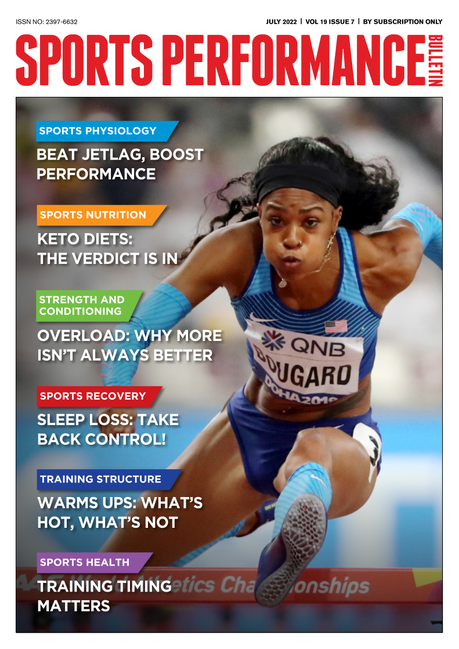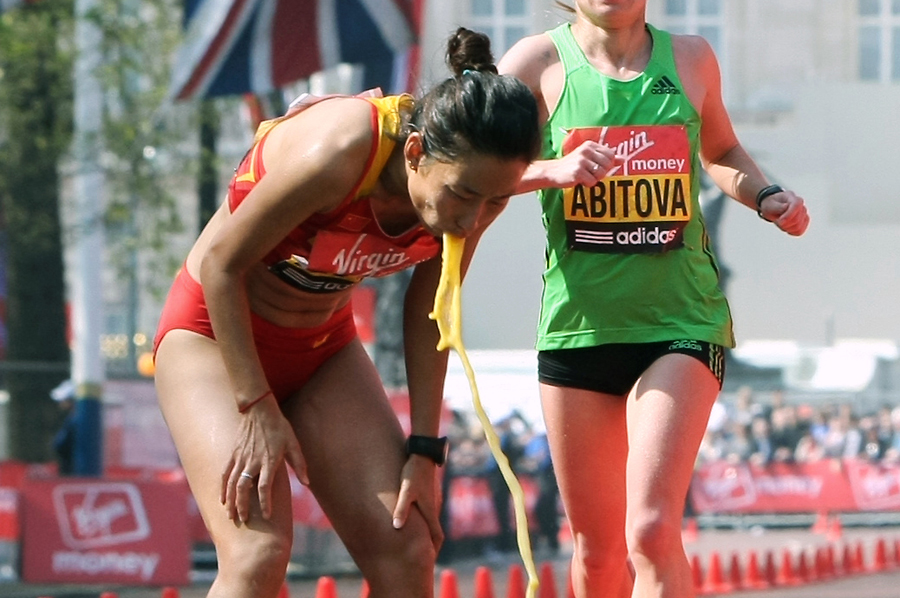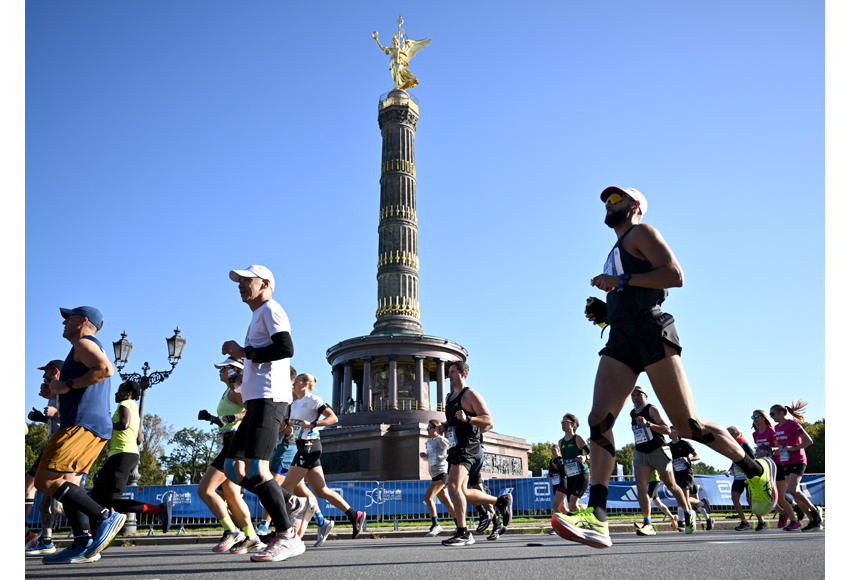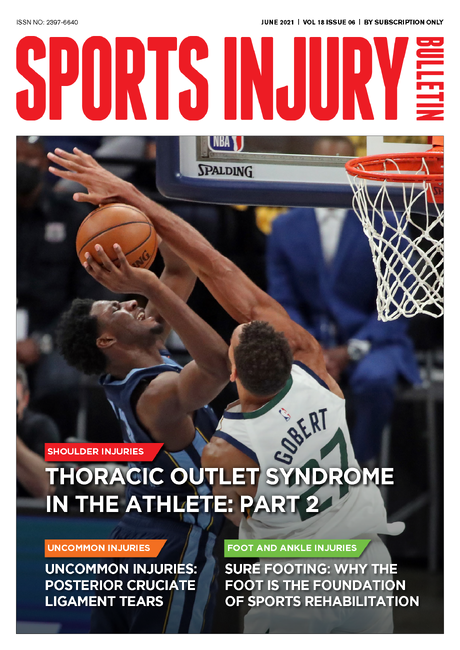Sugar and athletes: not so sweet truths about inflammation
SPB looks at new research on the link between dietary sugar intake and inflammation, and discusses the implications for athletes
As anyone who takes a keen interest in nutrition for performance and health will know, the topic of sugar consumption has come very much to the fore over the past decade or so. In a nutshell, there’s now good evidence to suggest that the nutritional advice given by ‘health experts’ over several decades focussing on cutting fat intake and switching to low-fat foods was fundamentally flawed because it ignored the role of sugar. While there’s no doubting that processed fats such as trans-fats and the excessive consumption of seed oils (eg sunflower, rape, corn etc) are undesirable from a health perspective(1), the low-fat message essentially put much of the blame for conditions such as obesity, heart disease and diabetes on saturated fat and cholesterol, while giving sugar and refined carbohydrate foods with added sugar a free pass.
Sugar and obesity
There’s much historical evidence to suggest that health professionals got it all wrong. If we look at the incidence of obesity (figures 1 and 2) we can see that it’s closely correlated with sugar consumption, and that the move to low-fat foods didn’t result in a decrease in obesity – rather it coincided with an increased incidence.
Figure 1: Sugar consumption (kg per year) in the UK and USA since 1700
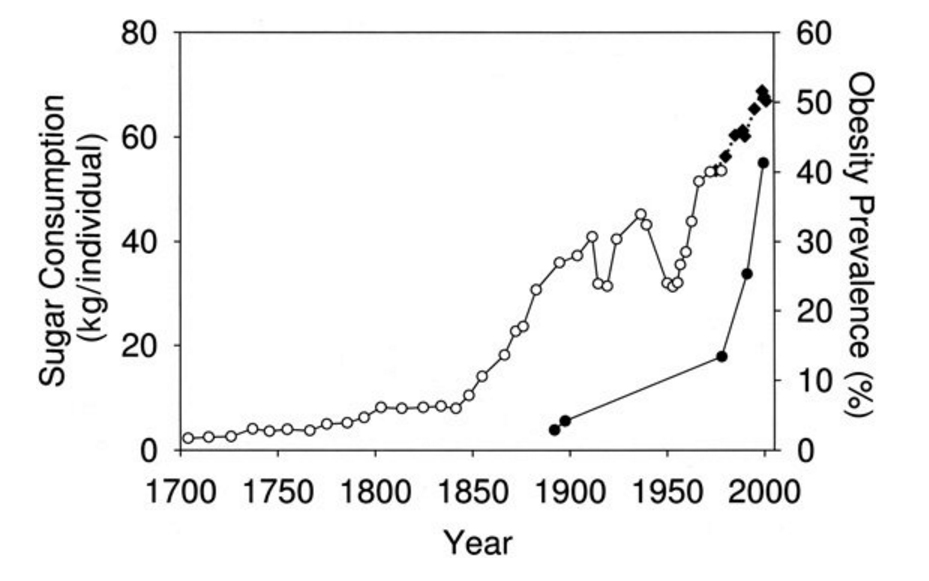
Figure 2: Obesity in US adolescents and the introduction of low-fat guidelines*
Related Files
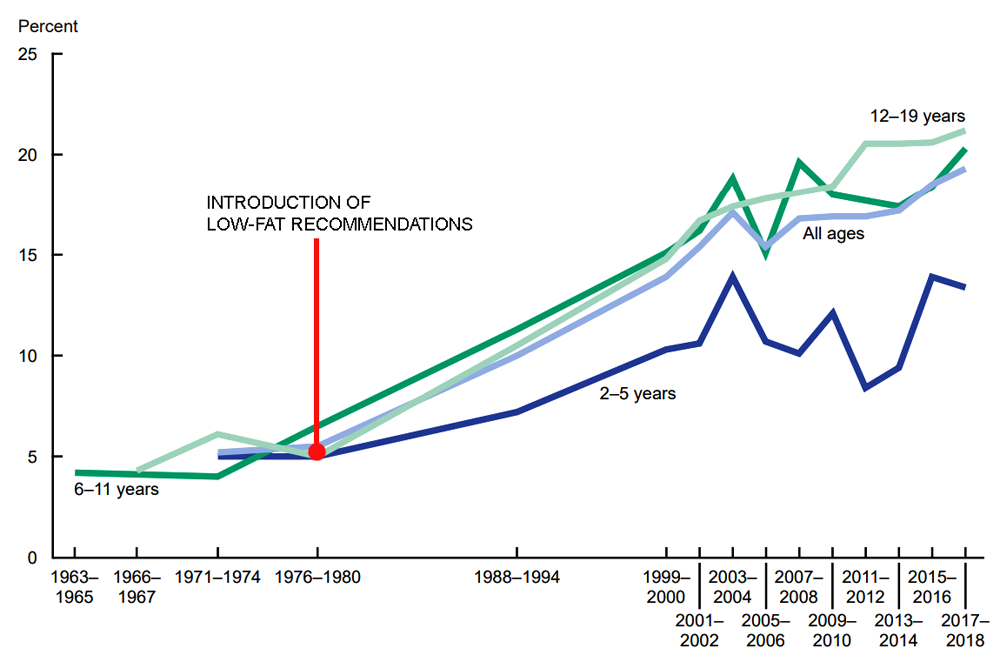
Sugar intake guidelines
With the growing realisation of the role of sugar in the rising incidence of diseases such as obesity and diabetes, and with recent research indicating a link between high sugar intakes and cancer(2), many health bodies and government departments have now adopted dietary recommendations for sugar intake. In the early 2000s, the World Health Organisation recommended that added sugar intake should amount to no more than 10% of total calorie intake, a recommendation that has since been adopted more widely – for example by the US CDC in their current ‘Dietary Guidelines for Americans’(3). You might think this sounds generous, but for an athlete consuming say 2,500 calories per day, that equates to no more than 250 calories from sugar – 62 grams per day. That sounds quite generous until you realise that even up to the maximum ‘10% of total calories’ recommendation, this is the amount of sugar contained in just one and a half energy gels; consume these and you have to consume zero sugar in the rest of that day’s food intake – very difficult considering how many foods contain natural or added sugar.
Sugar and health
As well as providing the body with ‘empty calories’ (ie no vitamins, minerals, fiber or protective antioxidants), sugar consumption can disturb the delicate and complex system of blood sugar regulation via the hormone insulin. Unlike the energy released from the slow digestion of carbohydrate built from long chains of glucose molecules (ie starchy carbohydrates such as bread, oats, pasta, rice, potatoes etc), the sugar molecules in added/free sugars require zero digestion so rapidly enter the bloodstream, causing a blood sugar spike.
Although the body can control this process by releasing insulin, the result is often that the excess sugar calories are dumped as fat in body tissue. Prolonged intakes of high sugar intake over time can lead to obesity and a compromised insulin system, resulting in diabetes. More generally, eating too much sugar is associated with a barrage of symptoms known as ‘classic metabolic syndrome’(4). These include weight gain, abdominal obesity, disordered blood cholesterol levels (decreased HDL and increased LDL), elevated blood sugar, elevated blood fats, and high blood pressure.
Athletes, sugar and inflammation
As we have explained in a number of previous SPB articles, optimum carbohydrate nutrition is crucial where performance matters – for example, on race days. While low-carbohydrate intake can be useful as a tool during training – for example, to enhance fat oxidation and thus help in weight management - the fact remains that pre-race and in-race carbohydrate fuelling is critical for a PB, especially when the race duration exceeds 90 minutes or so(5). Given that in-race and in-training fuelling involves the consumption of more (often far more) sugar (consumed mostly as glucose in drinks and gels) than is recommended for health, this creates a bit of a quandary for athletes seeking to balance health and performance.
Of particular relevance to athletes is some researchers have raised concerns that higher than recommended sugar intake has been linked to inflammation and increased susceptibility to injury(6). This seems to occur by increased gut permeability and disturbing the natural (healthy) gut flora, which allows immune cells associated with the inflammatory response to circulate round the body, in turn triggering signalling and hormone responses resulting in inflammation. Another mechanism seems to occur because a high-sugar diet promotes muscle injury via development of skeletal muscle insulin resistance, leading to inflammation by stimulation of key muscle cell receptors (PPARs-δ receptors) involved in the inflammatory/healing pathway(7).
Until recently, the link between sugar intake and inflammation has been studied more in terms of association and plausible biochemical pathways, where sugar metabolism is linked to changes in cellular physiology that are known to occur in inflammation. However a new and promising marker of inflammation called ‘adenosine deaminase activity’ (ADA) is now being investigated as a tool to explore the phenomenon of sugar intake and inflammation in athletes because ADA increases in the blood as a result of muscle injury and also plays a potent inflammatory role in blood.
In a 2019 study, ADA was successfully used as a promising novel biomarker of muscle injury, and was increased after rigorous physical activity in soccer players(8), which opens up interesting possibilities. For athletes where rigorous training regimens and intense physical exertion are routine, the impact of dietary choices (eg sugar consumption) on inflammation and injury risk becomes particularly pertinent, so research exploring this relationship would be particularly useful. Unfortunately, no studies to date have really explored this topic, but that’s all changed thanks to a new study by a team of Chinese scientists.
New research
Published in the journal ‘Food & Nutrition Research’, this study investigated the association between dietary simple sugar intake and markers of inflammation in soccer players(9). In particular, the researchers sought to explore the associations between dietary total simple sugar intake and blood levels of two kinds of markers of inflammation: high-sensitivity C-reactive protein (hs-CRP - a more sensitive way of measuring inflammation than the normal C-reactive protein test), and adenosine deaminase activity (ADA – as described above), in semi-professional soccer players.
To do this, 108 fit soccer players aged between 18 and 35 years were recruited. To qualify for inclusions, all the players had to be free from any of the following factors (all of which are linked to inflammation and could therefore interfere with the findings):
· A history of chronic inflammatory conditions (eg rheumatoid arthritis, inflammatory bowel disease, etc).
· Known metabolic disorders affecting glucose metabolism (eg diabetes).
· Corticosteroid use or other anti-inflammatory medications.
All the participants completed a validated food frequency questionnaire (FFQ)(10) to assess their habitual dietary intake. The FFQ consisted of a comprehensive list of foods and beverages. For each item, participants indicated their frequency of consumption (eg servings per day, week, or month) and portion sizes. Responses from the FFQ were analyzed using specialized nutritional software to estimate participants’ daily intake of key nutrients, including total energy, carbohydrates, proteins, and fats, vitamins and minerals, and dietary fiber. Importantly, sugar intake (including glucose, fructose, galactose, sucrose, lactose, and maltose) was calculated based on the reported consumption of sugary foods and beverages.
What they measured
In addition to analyzing the players’ diets, the researchers also took anthropometric measurements (height, weight, body fat %) and assessed the physical exercise levels – both training and leisure activities. In addition, blood samples were collected following an overnight period of fasting. These samples were tested for total cholesterol (TC), high-density lipoprotein cholesterol (HDL-C), low-density lipoprotein cholesterol (LDL-C), and triglycerides (TGs – blood fats). Serum insulin levels were also determined along with serum high-sensitivity C-reactive protein (hs-CRP) concentrations and serum ADA levels. The researchers then carried out a sophisticated statistical analysis to determine whether, and if so how, the athletes’ intake of dietary sugar affected their blood finding – particularly the levels of inflammation measured via hs-CRP and ADA.
What they found
The key finding to emerge was that there was a strong and statistically significant correlation between total dietary sugar intake and the amount of inflammation assessed by inflammatory markers in the players. Higher total sugar intake resulted in higher levels of inflammation. Of the different dietary sugars consumed (eg glucose, fructose, maltose, galactose etc), the strongest correlation was found with fructose and glucose intakes; the strong positive associations observed between dietary fructose and glucose intake with serum hs-CRP levels suggested a significant relationship between sugar consumption and systemic inflammation (see figure 3). By contrast, there was only a very weak association between glucose/fructose consumption and ADA levels (see figure 3), although ADA levels were correlated with total sugar intake. There were no associations between the players’ sugar intake and blood cholesterol or blood lipid levels.
Figure 3: Association between ADA, hs-CRP and dietary glucose/fructose intake
Correlation analysis of the associations between dietary fructose and glucose with inflammation markers hs-CRP and ADA levels (after adjustment for age, sex, and physical activity). The association between dietary glucose/fructose and serum hs-CRP levels was strong, but weaker for ADA levels. However, the correlation with total dietary sugar intake (not shown here) was strong for both hs-CRP and ADA.
Implications for athletes
Before drawing conclusions, it should be pointed out that this study was a cross-sectional study – ie a snapshot in time of sugar intakes and inflammatory markers. This makes it difficult to draw robust conclusions about causality. For that, an intervention study would be more appropriate – eg put athletes on a low-sugar diet then after a period of time measure inflammatory markers. After that, switch them to a high-sugar diet and repeat the process. If inflammation increases in the high-sugar condition compared to low-sugar, there’s excellent evidence of causality. Another limitation is that the athletes self-reported their food intakes, which inevitably introduces some error.
Despite these reservations however, these findings are significant because (in conjunction with the previous studies on molecular mechanisms of sugar-activated inflammation) they fit with what is already known about the link between dietary sugar and inflammation. And since ADA levels in the soccer players were higher when total dietary sugar intake was higher, the implication is that a high-sugar diet may also result in more damage to muscles at the cellular level – something that would be disadvantageous for rapid recovery.
For athletes, who are engaged in regular vigorous exercise, and whose sugar intakes may at times be in excess of what is recommended, what is the advice? Well, the good news is that a large body of research shows that regular exercise in of itself exerts an anti-inflammatory effect(11), which means that the inflammation-inducing impacts of sugar intake may be ameliorated to some extent. However, in the study above, all the participants were involved in regular moderate to intense training, yet higher sugar intakes were still associated with more inflammation/damage.
Looking at the evidence to date, a sensible approach for athletes seeking optimum health would be to limit sugar intake in their day-to-day diet (ie not consumed specifically to support exercise) wherever possible - ie by avoiding sugary and refined foods such as candy, chocolates, fizzy drinks, biscuits, cakes, pastries etc. Remember to that much of the sugar in the diet is added by manufacturers so watch out for foods like yogurt and snack bars, even if they claim to be made from healthy ingredients (read the labels)! More generally, promoting a healthy diet rich in whole unprocessed carbohydrates (pasta, oats, beans, potatoes etc), fruits, vegetables, and lean proteins (see this article) may help attenuate the inflammatory effects of high sugar intake, which is what all athletes should be aiming for anyway(12).
When it comes to training and competition, the use of carbohydrate supplementation such as drinks, gels and energy bars has been unequivocally shown to improve performance where exercise is of a long-duration, particularly if it is high-intensity in nature. So in a competition situation therefore, it makes sense to continue to use these products if you wish, especially since the percentage of time spent in competition is small compared to training. However, if you’re someone who routinely uses energy gels and drinks during training – even when you’re not pushing on towards the limit - you might want to rethink that strategy. Perhaps these products could be reserved for the really long training sessions, thus cutting out unnecessary sugar intake. Alternatively, you might want to consider some natural whole unprocessed low-sugar carbohydrate snacks such as home-made flapjacks. A final point to remember when training is that if you only ever exercise while consuming energy drinks and gels, training your muscles to get better at fat-burning will be harder. This is yet another reason to limit your sugar intake!
References
1. Foods. 2024 Dec 23;13(24):4186
2. Cancer Treat Res Commun. 2025 Feb 3:43:100876
3. www.dietaryguidelines.gov/sites/default/files/2020-12/Dietary_Guidelines_for_Americans_2020-2025.pdf#page=31
4. Nutrients. 2022 Sep 15;14(18):3809
5. Sports Med (2015) 45 (Suppl 1):S33–S49
6. Cells 2020; 9(12): 2701
7. Mediators Inflamm 2013; 2013: 509502
8. Braz J Pharm Sci 2019; 55: e1759
9. Food & Nutrition Research 2025, 69: 11036
10. Popul Nutr 2023; 42(1): 111
11. Acta Med Philipp. 2024 Nov 29;58(21):90-105
12. Nutrients 2021; 13(1): 279
Newsletter Sign Up
Testimonials
Dr. Alexandra Fandetti-Robin, Back & Body Chiropractic
Elspeth Cowell MSCh DpodM SRCh HCPC reg
William Hunter, Nuffield Health
Newsletter Sign Up
Coaches Testimonials
Dr. Alexandra Fandetti-Robin, Back & Body Chiropractic
Elspeth Cowell MSCh DpodM SRCh HCPC reg
William Hunter, Nuffield Health
Keep up with latest sports science research and apply it to maximize performance
Today you have the chance to join a group of athletes, and sports coaches/trainers who all have something special in common...
They use the latest research to improve performance for themselves and their clients - both athletes and sports teams - with help from global specialists in the fields of sports science, sports medicine and sports psychology.
They do this by reading Sports Performance Bulletin, an easy-to-digest but serious-minded journal dedicated to high performance sports. SPB offers a wealth of information and insight into the latest research, in an easily-accessible and understood format, along with a wealth of practical recommendations.
*includes 3 coaching manuals
Get Inspired
All the latest techniques and approaches
Sports Performance Bulletin helps dedicated endurance athletes improve their performance. Sense-checking the latest sports science research, and sourcing evidence and case studies to support findings, Sports Performance Bulletin turns proven insights into easily digestible practical advice. Supporting athletes, coaches and professionals who wish to ensure their guidance and programmes are kept right up to date and based on credible science.



